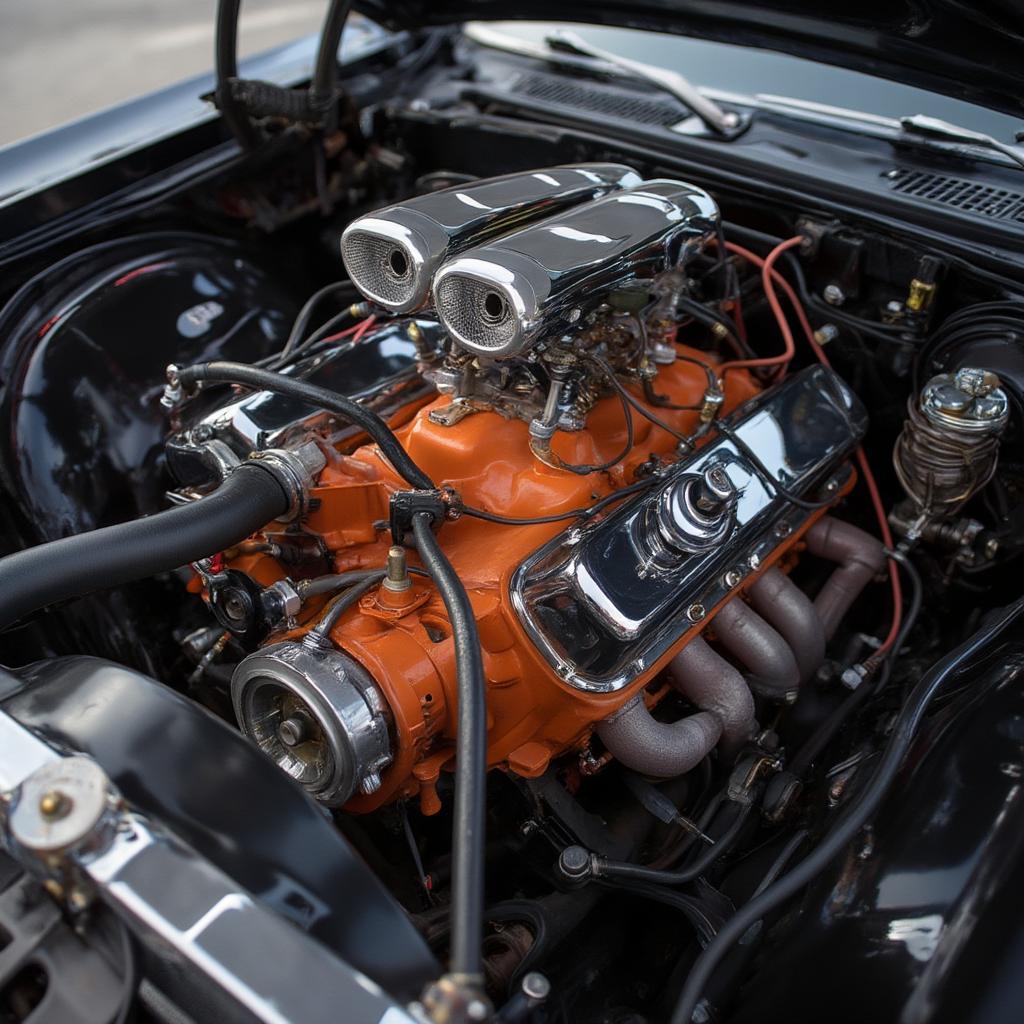Unleashing the Beast: 1971 Dodge Challenger Horsepower Explained

The 1971 Dodge Challenger, a name that echoes through the halls of muscle car history, is renowned for its aggressive styling and potent engine options. But just how much horsepower did this legendary machine pack under its hood? Let’s dive deep into the world of 1971 Dodge Challenger Horsepower, exploring the various engine configurations and their performance capabilities.
Decoding the 1971 Dodge Challenger Engine Lineup
The 1971 Challenger offered a diverse range of engines, catering to different performance needs and budgets. From the economical slant-six to the monstrous Hemi V8, there was a Challenger for everyone. Understanding these engine options is key to understanding the true horsepower potential of this iconic muscle car.
The Base Powerplants: Slant-Six and Small-Block V8s
The entry-level Challenger was equipped with a dependable 225 cubic inch slant-six engine, producing a modest but respectable 145 horsepower. While not a powerhouse, it offered decent fuel economy and served as a reliable daily driver. Moving up the ladder, buyers could opt for small-block V8s, including the 318 cubic inch with a two-barrel carburetor, generating 230 horsepower. A four-barrel version of the 318 bumped the output to a more spirited 275 horsepower.
Unleashing the Fury: Big-Block V8 Power
For those craving true muscle car performance, Dodge offered a formidable selection of big-block V8s. The 383 cubic inch Magnum V8, with its four-barrel carburetor, churned out an impressive 330 horsepower. The legendary 440 cubic inch Six Pack, featuring three two-barrel carburetors, unleashed a staggering 385 horsepower. This engine, with its distinctive air intake setup, was a true testament to the muscle car era’s focus on raw power.
The King of the Hill: The Mighty 426 Hemi
At the pinnacle of the 1971 Challenger’s performance hierarchy sat the legendary 426 Hemi V8. This iconic engine, with its hemispherical combustion chambers, was a force to be reckoned with, officially rated at 425 horsepower. However, many believe the actual output was significantly higher, potentially exceeding 500 horsepower. The Hemi’s reputation for tire-shredding acceleration and dominant performance solidified its place in muscle car lore.

Beyond Horsepower: Factors Influencing Performance
While horsepower is a crucial indicator of performance, other factors contributed to the 1971 Challenger’s on-road capabilities. These included:
- Transmission: Buyers could choose from a variety of transmissions, including a three-speed manual, four-speed manual, and a three-speed automatic. The choice of transmission significantly impacted acceleration and overall driving experience.
- Rear Axle Ratio: Different rear axle ratios were available, allowing for customization based on desired performance characteristics. A lower numerical ratio provided quicker acceleration, while a higher ratio favored fuel economy and higher top speed.
- Weight: The Challenger’s weight varied depending on the chosen options and body style, influencing its overall agility and handling.
What Was the Fastest 1971 Dodge Challenger?
Undoubtedly, the fastest 1971 Dodge Challenger was the R/T equipped with the 426 Hemi engine and a four-speed manual transmission. With its immense power and optimized gearing, this combination could achieve blistering quarter-mile times in the low 13-second range.

1971 Dodge Challenger Horsepower: A Legacy of Performance
“The 1971 Challenger represented the peak of the muscle car era, offering a perfect blend of style and performance,” says renowned automotive historian, Dr. Eleanor Vance, author of “American Muscle: The Golden Age of Performance.” “The variety of engine options, culminating in the legendary Hemi, ensured there was a Challenger to satisfy every enthusiast’s desire for power.”
Conclusion: The Enduring Power of the 1971 Dodge Challenger
The 1971 Dodge Challenger’s horsepower offerings solidified its place as a true muscle car icon. From the base slant-six to the earth-shattering Hemi, each engine option contributed to the Challenger’s legendary status. Even today, the 1971 Dodge Challenger horsepower continues to captivate enthusiasts and fuel the passion for classic American muscle. Explore the world of classic car ownership and experience the thrill of driving a legend.
FAQ: Your 1971 Dodge Challenger Horsepower Questions Answered
- What was the most powerful engine in the 1971 Dodge Challenger? The 426 Hemi V8.
- How much horsepower did the 1971 Dodge Challenger R/T have? It depended on the engine; the 440 Six Pack had 385 hp, and the 426 Hemi had 425 hp.
- What is a 1971 Dodge Challenger worth today? Values vary greatly depending on condition, originality, and options, ranging from tens of thousands to over a hundred thousand dollars for pristine Hemi models.
- Was the 1971 Dodge Challenger a good car? It was highly regarded for its performance and styling but could be challenging to handle with the larger engines.
- How fast was the 1971 Dodge Challenger Hemi? It could achieve quarter-mile times in the low 13-second range.
- What transmission options were available in the 1971 Dodge Challenger? Three-speed manual, four-speed manual, and three-speed automatic.
- What was the base engine in the 1971 Dodge Challenger? A 225 cubic inch slant-six engine.
- Where can I find more information about the 1971 Dodge Challenger? Online forums, classic car websites, and automotive history books are excellent resources.
- How does the 1971 Dodge Challenger compare to other muscle cars of its era? It was a direct competitor to cars like the Ford Mustang and Chevrolet Camaro, offering comparable performance and a unique style.




